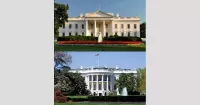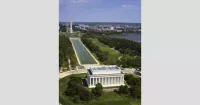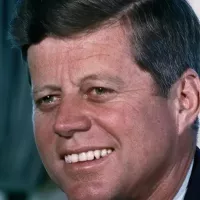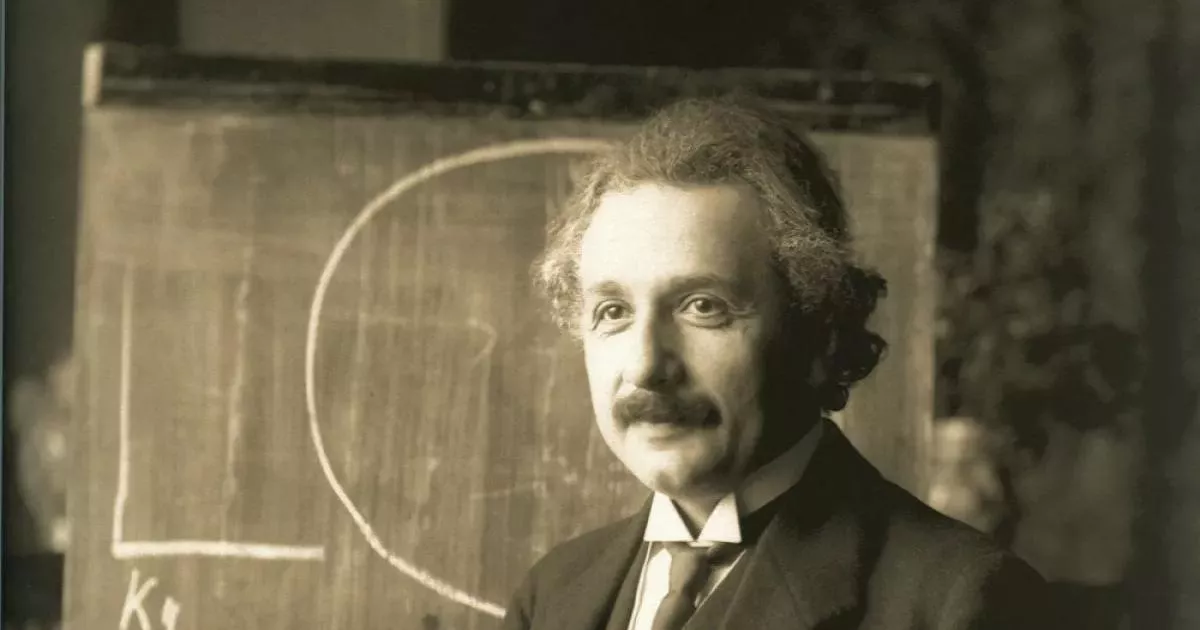How Albert Einstein built a successful career. Explore key moments that defined the journey.
Albert Einstein (1879-1955) was a German-born theoretical physicist renowned for his theory of relativity. This included the famous mass-energy equivalence formula, E=mc². He also significantly contributed to the development of quantum mechanics and received the 1921 Nobel Prize in Physics for his explanation of the photoelectric effect. His work revolutionized our understanding of gravity, space, time, and the universe. Einstein is widely considered one of the most influential scientists of the 20th century.
1900: Planck Formulates Quantum Theory
From 1911 to 1913, Planck reformulated his 1900 quantum theory, introducing the idea of zero-point energy in his "second quantum theory", which later attracted the attention of Einstein and his assistant Otto Stern.
1900: Einstein's First Paper Submitted
In 1900, Albert Einstein submitted his first paper on capillary attraction to Annalen der Physik.
1900: Graduation from Swiss Federal Polytechnic School
In 1900, Einstein graduated from the Swiss federal polytechnic school in Zurich with a mathematics and physics teaching diploma.
1901: Einstein's First Paper Published
In 1901, Albert Einstein's first paper, "Folgerungen aus den Capillaritätserscheinungen" ("Conclusions from the capillarity phenomena"), was published in Annalen der Physik.
1901: Publication of First Paper
In 1901, Einstein's first paper, "Folgerungen aus den Capillaritätserscheinungen" was published in the journal Annalen der Physik.
1902: Einstein's Thermodynamics Papers
In 1902, Albert Einstein published papers on thermodynamics, attempting to interpret atomic phenomena from a statistical viewpoint.
1903: Einstein's Thermodynamics Papers
In 1903, Albert Einstein published papers on thermodynamics, attempting to interpret atomic phenomena from a statistical viewpoint.
1903: Permanent Position at the Swiss Patent Office
In 1903, Einstein's position at the Swiss Patent Office was made permanent.
1904: Einstein's Research on Atomic Size
In 1904, Albert Einstein's research was primarily concerned with the effect of finite atomic size on diffusion phenomena.
April 1905: Completion of Doctoral Dissertation
On 30 April 1905, Einstein completed his doctoral dissertation, "Eine neue Bestimmung der Moleküldimensionen", which was later approved by Professor Alfred Kleiner.
June 1905: Einstein's Paper on Electrodynamics of Moving Bodies Received
On June 30, 1905, Albert Einstein's paper "Zur Elektrodynamik bewegter Körper" ("On the Electrodynamics of Moving Bodies") was received. It reconciled conflicts between Maxwell's equations and Newtonian mechanics, later becoming known as the special theory of relativity.
1905: Einstein's Paper on Brownian Motion
In 1905, Albert Einstein published a paper on Brownian motion, which showed that Brownian movement can be construed as firm evidence that molecules exist.
1905: Publication of the Annus Mirabilis papers
In 1905, Albert Einstein published his "Annus Mirabilis" papers in the Annalen der Physik journal. These papers covered the photoelectric effect, Brownian motion, special theory of relativity and the equation E = mc², and contributed substantially to modern physics.
1905: Photoelectric effect
In 1905, Einstein played a major role in developing quantum theory, beginning with his paper on the photoelectric effect.
1905: Postulation of Light Quanta
In 1905, Einstein postulated that light consists of localized particles (quanta), though initially rejected by physicists, including Planck and Bohr, this idea gained acceptance by 1919.
1905: Annus Mirabilis Publications
In 1905, Einstein published four groundbreaking papers outlining the theory of the photoelectric effect, explaining Brownian motion, introducing the special theory of relativity, and demonstrating the equivalence of mass and energy.
1905: PhD Dissertation to the University of Zurich
In 1905, Einstein submitted a successful PhD dissertation to the University of Zurich.
1905: Mass–energy equivalence and special relativity
In 1905, Einstein's work on relativity, including the mass–energy equivalence (E=mc^2), was initially controversial but gradually accepted by leading physicists, starting with Max Planck.
January 1906: Awarded PhD
On 15 January 1906, Einstein was formally awarded his PhD.
1906: Promotion at Patent Office
In 1906, Einstein was promoted to Technical Examiner Second Class at the patent office.
1907: Development of General Relativity
Between 1907 and 1915, Einstein developed general relativity, a theory of gravitation where gravitational attraction is a result of the warping of spacetime by masses.
1907: Formulation of Equivalence Principle
In 1907, Einstein formulated his equivalence principle, a key milestone in his journey from the special theory of relativity to a new understanding of gravitation. The equivalence principle asserts that an observer in free fall within a gravitational field cannot detect the field's existence.
1907: Model of Matter as Harmonic Oscillators
In 1907, Einstein proposed a model of matter where each atom in a lattice structure is an independent harmonic oscillator to solve the specific heat problem in classical mechanics, later refined by Peter Debye.
1907: Article on Gravitation and Light Propagation
In 1907, Einstein published an article titled "On the Relativity Principle and the Conclusions Drawn from It", discussing acceleration under special relativity. He argued that free fall is inertial motion and introduced the equivalence principle, predicting gravitational time dilation, redshift, and lensing.
1907: Article on acceleration under special relativity
In 1907, Einstein published an article titled "On the Relativity Principle and the Conclusions Drawn from It", discussing acceleration under special relativity. He argued that free fall is inertial motion and introduced the equivalence principle, predicting gravitational time dilation, redshift, and lensing.
1908: Privatdozent at the University of Bern
In 1908, Einstein became a Privatdozent at the University of Bern.
1908: Junior Teaching Position at University of Bern
In 1908, Einstein secured a junior teaching position at the University of Bern.
1908: Minkowski reinterprets special relativity
In 1908, Hermann Minkowski reinterpreted Einstein's special relativity in geometric terms as a theory of spacetime.
1908: Richardson predicts a change in the magnetic moment
In 1908, Owen Willans Richardson predicted that a change in the magnetic moment of a free body will cause this body to rotate.
1909: Lecture at University of Zurich
In 1909, Einstein gave a lecture on relativistic electrodynamics at the University of Zurich, which led to him being offered an associate professorship.
1909: Einstein's paper introducing the photon concept
In 1909, Einstein's paper, Einstein showed that Max Planck's energy quanta must have well-defined momenta and act in some respects as independent, point-like particles. This paper introduced the photon concept and inspired the notion of wave–particle duality in quantum mechanics.
April 1911: Professorship in Prague
In April 1911, Einstein accepted a chair at the German Charles-Ferdinand University in Prague, requiring him to become an Austrian citizen.
1911: Planck Reformulates Quantum Theory
From 1911 to 1913, Planck reformulated his 1900 quantum theory, introducing the idea of zero-point energy in his "second quantum theory", which later attracted the attention of Einstein and his assistant Otto Stern.
1911: Article on Gravitation and Light Propagation
In 1911, Einstein published "On the Influence of Gravitation on the Propagation of Light", expanding on his 1907 work and estimating the deflection of light by massive bodies, allowing for experimental testing of general relativity.
1911: Estimation of Light Bending
In 1911, Einstein used his equivalence principle to estimate how much a ray of light from a distant star would bend due to the Sun's gravitational pull as it passed close to the Sun's photosphere.
July 1912: Return to ETH Zurich
In July 1912, Einstein returned to his alma mater, the ETH Zurich, to take up a chair in theoretical physics.
June 1913: Development of the Entwurf Theory
In June 1913, Einstein's investigations resulted in the Entwurf ('draft') theory, a preliminary and complex version of general relativity with additional gauge fixing conditions.
July 1913: Invitation to Relocate to Berlin
In the Spring of 1913, Max Planck and Walther Nernst visited Einstein in Zurich to persuade him to relocate to Berlin, offering him membership of the Prussian Academy of Sciences, directorship of the Kaiser Wilhelm Institute for Physics, and a chair at the Humboldt University of Berlin.
1913: Research on Zero-Point Energy and Specific Heat
From 1911 to 1913, Einstein and Otto Stern compared the theoretical specific heat of hydrogen gas with experimental data, assuming the energy of rotating diatomic molecules contains zero-point energy. After publishing the findings, they promptly withdrew their support, because they no longer had confidence in the correctness of the idea of zero-point energy.
1913: Refining Gravitation Model
In 1913, Einstein reworked his calculation of gravitational lensing, finding a way to model gravitation using the Riemann curvature tensor of a non-Euclidean four-dimensional spacetime.
1914: Move to Berlin
In 1914, Einstein moved to Berlin to join the Prussian Academy of Sciences and the Humboldt University of Berlin, becoming director of the Kaiser Wilhelm Institute for Physics in 1917.
November 1915: Abandonment of the Entwurf Theory
In November 1915, after more than two years of intensive work, Einstein realized that the hole argument was mistaken and abandoned the Entwurf theory.
1915: Completion of General Relativity
Between 1907 and 1915, Einstein developed general relativity, a theory of gravitation where gravitational attraction is a result of the warping of spacetime by masses.
1915: Completion of Riemannian Geometry Model
By the fall of 1915, Einstein completed his reimagining of the mathematics of gravitation using Riemannian geometry, applying his new theory to the behavior of the Sun as a gravitational lens and to the precession of the perihelion of Mercury.
1915: Einstein adopts Minkowski's formalism
In 1915, Einstein adopted Minkowski's spacetime formalism in his general theory of relativity.
1915: Einstein-de Haas Experiment Publication
In 1915, Einstein and Wander Johannes de Haas published two papers claiming the first experimental observation of the effect which is a consequence of the conservation of angular momentum.
1915: General Theory of Relativity
In 1915, Einstein proposed the general theory of relativity, extending his system of mechanics to incorporate gravitation.
1916: Prediction of Gravitational Waves
In 1916, Einstein predicted the existence of gravitational waves, ripples in spacetime curvature that propagate as waves, carrying energy as gravitational radiation, based on general relativity.
1916: President of German Physical Society
In 1916, Einstein was elected president of the German Physical Society.
1917: Einstein Applies General Relativity to the Universe
In 1917, Einstein applied general relativity to the structure of the universe, discovering that the field equations predicted a dynamic universe. Lacking observational evidence, he introduced the cosmological constant to allow the theory to predict a static universe, known as the Einstein World.
1917: Director of the Kaiser Wilhelm Institute for Physics
In 1917, Einstein became director of the Kaiser Wilhelm Institute for Physics in Berlin.
1917: Prediction of Stimulated Emission
In 1917, Einstein published an article in Physikalische Zeitschrift that proposed the possibility of stimulated emission, the physical process that makes possible the maser and the laser.
1917: Spontaneous and Stimulated Emission
In 1917, Einstein wrote a paper introducing the concepts of spontaneous emission and stimulated emission, the latter being the core mechanism behind lasers and masers, contributing significantly to future developments in physics.
1918: Einstein Signatory of German Democratic Party Proclamation
In 1918, Albert Einstein was one of the signatories of the founding proclamation of the German Democratic Party, a liberal party.
May 1919: Eclipse Tests Gravitational Lensing Theory
In May 1919, a total eclipse of the Sun provided an opportunity to test Einstein's theory of gravitational lensing. Observations by Sir Arthur Eddington yielded results consistent with Einstein's calculations, which led to widespread reporting of the confirmation of his theories.
1919: Confirmation of General Relativity
In 1919, Einstein became a scientific celebrity after the confirmation of his general theory of relativity, gaining widespread recognition and admiration.
1919: Acceptance of Light Quanta
In 1919, Robert Millikan's experiments on the photoelectric effect and Compton scattering led to the universal acceptance of Einstein's light quanta theory, which he initially postulated in 1905.
April 1921: Arrival in America
On April 2, 1921, Einstein arrived in America, marking the start of his new life as an intellectual icon. He was welcomed to New York City by Mayor John Francis Hylan and spent three weeks giving lectures and attending receptions at Columbia University, Princeton, and the White House.
July 1921: Publication of Essay on America
In July 1921, Einstein published an essay, "My First Impression of the U.S.A.", where he sketched the American character, praising the joyous, positive attitude to life, friendliness, self-confidence, optimism, and lack of envy he observed in Americans.
1921: Nobel Prize in Physics
In 1921, Albert Einstein received the Nobel Prize in Physics for his services to theoretical physics, especially for his discovery of the law of the photoelectric effect.
1921: Einstein Asked to Raise Funds for Hebrew University
In 1921, Albert Einstein was asked by Chaim Weizmann to help raise funds for the planned Hebrew University of Jerusalem. He suggested establishing institutes for agriculture, chemistry, and microbiology, and promoted an Oriental Studies Institute.
1922: Appointment to League of Nations Committee
From 1922, Einstein became a member of the Geneva-based International Committee on Intellectual Cooperation of the League of Nations, aimed at encouraging collaboration among scientists, artists and scholars from different countries.
1922: Nobel Prize Awarded
In 1922, Albert Einstein was awarded the 1921 Nobel Prize in Physics for his services to Theoretical Physics, and especially for his discovery of the law of the photoelectric effect.
1923: Participation in League of Nations Committee
In 1923, Einstein actively participated in the International Committee on Intellectual Cooperation of the League of Nations, fostering collaboration among international intellectuals.
1924: Participation in League of Nations Committee
In 1924, Einstein actively participated in the International Committee on Intellectual Cooperation of the League of Nations, fostering collaboration among international intellectuals.
1924: Bose-Einstein Statistics
In 1924, Einstein received a statistical model from Satyendra Nath Bose, which he then translated and published, describing the Bose-Einstein condensate phenomenon at very low temperatures.
1925: Einstein Criticizes Bolsheviks
In 1925, Albert Einstein criticized the Bolsheviks for not having a "well-regulated system of government" and called their rule a "regime of terror and a tragedy in human history".
1925: Opening of the Hebrew University of Jerusalem
In 1925, the Hebrew University of Jerusalem opened, with Albert Einstein as a figurehead leader in its establishment.
1926: Einstein-Szilárd Refrigerator Co-invention
In 1926, Einstein and Leó Szilárd co-invented the Einstein refrigerator, a revolutionary absorption refrigerator with no moving parts, using only heat as input.
1926: Inspiration for Schrödinger's Work
In 1926, Einstein observed that de Broglie waves could explain the quantization rules of Bohr and Sommerfeld. This paper would inspire Schrödinger's work. Einstein discovered Louis de Broglie's work and supported his ideas, which were received skeptically at first.
1926: Photons Dubbed by Gilbert N. Lewis
In 1926, Gilbert N. Lewis dubbed Einstein's light quanta as 'photons'. Einstein concluded that each wave of frequency f is associated with a collection of photons with energy hf each, where h is the Planck constant.
1929: Einstein's Remark on Vladimir Lenin
In 1929, Albert Einstein expressed a more moderated view of Vladimir Lenin and the Bolsheviks, praising them while still criticizing their methods.
November 1930: Einstein-Szilárd Refrigerator Patent
In November 1930, U.S. patent 1,781,541 was awarded to Albert Einstein and Leó Szilárd for the Einstein refrigerator invention.
December 1930: Research Fellowship at Caltech
In December 1930, Einstein began a two-month research fellowship at the California Institute of Technology (Caltech). He declined invitations to receive prizes or make speeches, seeking to minimize media attention compared to his 1921 visit to the US.
1930: Debate with Bohr
In 1930, Einstein debated with Bohr, suggesting a thought experiment involving quantum entanglement where measuring one object instantaneously changes the wavefunction of another, regardless of distance, thus questioning the completeness of the wavefunction description.
1931: Friedmann-Einstein Universe
In 1931, following Hubble's discovery of the recession of galaxies, Einstein proposed the Friedmann-Einstein dynamic model of the cosmos, discarding the cosmological constant.
1931: Exploration of Steady-State Model
In early 1931, Einstein explored a steady-state model in a manuscript, proposing continuous matter creation associated with the cosmological constant to maintain constant matter density in an expanding universe.
1932: End of League of Nations Committee Membership
In 1932, Einstein concluded his ten-year membership of the International Committee on Intellectual Cooperation of the League of Nations.
1932: Einstein-de Sitter Universe
In 1932, Einstein proposed the Einstein-de Sitter universe, another dynamic model of the cosmos where he discarded the cosmological constant.
March 1933: Resignation from Prussian Academy
In March 1933, Einstein resigned from the Prussian Academy, marking the end of a period where he completed the general theory of relativity, proved the Einstein–de Haas effect, contributed to quantum theory of radiation, and developed Bose–Einstein statistics.
June 1933: Short Stay at Christ Church, Oxford
Until June 1933, Einstein stayed for three short periods at Christ Church, Oxford, where he was offered a five-year research fellowship.
September 1933: Request for Placement of German-Jewish Scientists
In September 1933, Einstein contacted Turkey's Prime Minister, İsmet İnönü, requesting the placement of unemployed German-Jewish scientists, leading to the rescue of over 1,000 individuals.
October 1933: Speech on Academic Freedom and Position at IAS
On October 3, 1933, Einstein delivered a speech on academic freedom at the Royal Albert Hall in London. Four days later, he returned to the US and took up a position at the Institute for Advanced Study, a refuge for scientists fleeing Nazi Germany.
1935: Permanent Residence in Princeton
From 1935, Einstein lived permanently in Princeton, where he developed a close friendship with Kurt Gödel, and unsuccessfully attempted to develop a unified field theory and refute the accepted interpretation of quantum physics.
1935: Decision to Remain in the United States
In 1935, Einstein decided to remain permanently in the United States and applied for citizenship after receiving offers from several European universities.
1935: EPR Paradox Publication
In 1935, Einstein, along with Boris Podolsky and Nathan Rosen, published a paper presenting the EPR paradox, a thought experiment challenging the completeness of quantum mechanics by suggesting that particles can have definite values for both position and momentum before measurement.
1935: Model of a Wormhole
In 1935, Einstein, in collaboration with Nathan Rosen, created a model of a wormhole, often called Einstein-Rosen bridges, aiming to model elementary particles with charge as a solution of gravitational field equations.
1937: Einstein Offers Marian Anderson Accommodation
In 1937, Albert Einstein invited black contralto Marian Anderson to stay at his home in Princeton after the Nassau Inn refused her a room due to her race. She stayed with him whenever she returned to Princeton, up until two months before his death.
July 1939: Einstein Supports Nuclear Weapons Research
In July 1939, Leó Szilárd and Eugene Wigner visited Albert Einstein to discuss the possibility of atomic bombs, an idea Einstein, a pacifist, had not considered. They requested Einstein's support in writing a letter with Szilárd to President Roosevelt, urging the U.S. to pay attention to nuclear weapons research and engage in its own research.
1946: Einstein Visits Lincoln University
In 1946, Albert Einstein visited Lincoln University, a historically black college in Pennsylvania, where he was awarded an honorary degree and gave a speech about racism in America.
1950: Unified Field Theory
In 1950, Einstein described his unified field theory in a Scientific American article titled "On the Generalized Theory of Gravitation", attempting to unify gravitation and electromagnetism, though the model did not accommodate the strong and weak nuclear forces.
1951: Einstein offers to testify for W. E. B. Du Bois
In 1951, Albert Einstein offered to be a character witness for civil rights activist W. E. B. Du Bois, who was facing trial as an alleged foreign agent. The judge dropped the case after Einstein's offer.
1955: Einstein signs manifesto highlighting danger of nuclear weapons
In 1955, Albert Einstein, along with Bertrand Russell and other intellectuals and scientists, signed a manifesto emphasizing the danger of nuclear weapons.
1964: Bell's Analysis of Quantum Entanglement
In 1964, John Stewart Bell further analyzed quantum entanglement, deducing that hidden variable theories require nonlocal interactions to explain quantum physics, resolving the EPR paradox in a way Einstein would not have preferred.
Mentioned in this timeline

The White House located at Pennsylvania Avenue NW in Washington...
California is a U S state on the Pacific Coast...
India officially the Republic of India is a South Asian...
New Zealand is an island country located in the southwestern...

Washington D C is the capital city and federal district...
Germany officially the Federal Republic of Germany is a Western...
Trending
1 month ago India-Bangladesh Ties Strained as Hasina Faces Potential Execution; Extradition Unlikely.
1 month ago Tesla Approved to Launch Autonomous Rideshare Service in Arizona: A New Era
Jaden McDaniels is an American professional basketball player currently playing for the Minnesota Timberwolves in the NBA He played college...

9 months ago Dire Wolf's potential return clashes with Trump's endangered species policy; de-extinction questioned.

28 days ago Trump Pardons Gobble and Waddle: A Thanksgiving Tradition Continues with Presidential Humor.

1 month ago Peyton Watson's Opportunity: Millions on Nuggets Roster and Denver Breakout Potential.
Popular

Ben Shapiro is a prominent American conservative political commentator media...

XXXTentacion born Jahseh Dwayne Ricardo Onfroy was a controversial yet...

Candace Owens is an American conservative political commentator and author...

William Franklin Graham III commonly known as Franklin Graham is...
The Kennedy Center Honors are annual awards recognizing individuals and...

John F Kennedy JFK was the th U S President...
